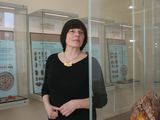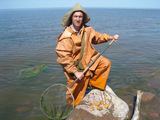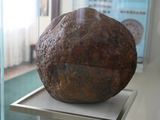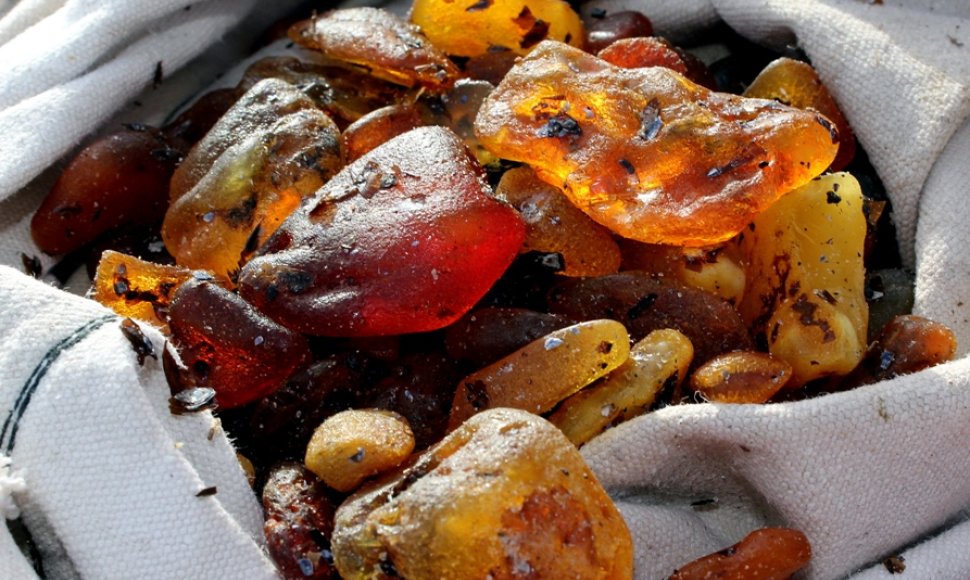In this year's Expo, hosted by South Korea, Lithuania is going to brand itself as the land of amber. Lithuanians are used to claim amber – mineral that is often titled the “Lithuanian gold” – as something uniquely Lithuanian. Amber craftsmen, however, admit that much of it comes to their workshops from the mines of Kaliningrad.
Impossible to count
Albertas Petkevičius, leader of Palanga Amber Craftsmen's Guild, is quick to dispel amber-land delusions: the amount that is collected on Lithuanian shores would not suffice to meet the demand from Palanga craftsmen alone. “I see amber as a crude material. It is the same, whether found here or dug in Kaliningrad. No one could collect enough of it,” he says, admitting that he only used one or two kilos of Lithuanian amber last year for his jewelry.
Vytautas Januška, director of the Underground Resources Department at Lithuanian Geology Service, delivers striking news: there are no data about how much amber Lithuania collects in its territory. “Lithuania does not engage in amber mining, we do not have any deposits. There is even no indication that such mining would be at all possible. It's like picking mushrooms – you can have whatever you find, that's it. It would be impossible to track the yearly amount of amber that people collect,” he says.
The biggest deposits of amber are to be found in the Sambian Peninsula (Russian Kaliningrad), but they too are running dry. In 1996, output of the Yantarny mine (Palvininkai in Lithuanian) in Russian Kaliningrad was 500-600 tons; in recent years, amber miners could only deliver half as much. Amber is running out and its price is on the rise, since increasing interest is coming from the Chinese. They are close to becoming new masters of the Yantarny mine, while Lithuanian jewelry expositions are almost always visited by guests from China.
Mining at Juodkrantė
Regina Makauskienė, project manager at Palanga Amber Museum, can still recall sea storms of 1981-1982. Back then, she says, people would leave the beach with handfuls of amber. After that, the Baltic Sea has never been so generous.
 |
| Aurelijos Kripaitės/15min.lt nuotr./Regina Makauskienė of Palanga Amber Museum |
“So it is difficult to say how much amber there is in the Baltic Sea, as no one has ever done any geological surveys. It must be noted, though, that Lithuania has indeed once engaged in amber mining. In mid-19 century, when the land was part of East Prussia, they started digging for amber in Juodkrantė. Company Stantien und Becker would work the field until 1890 and dug up, they say, about 2,250 tons of amber. This was when the famous Juodkrantė treasure was found – human-shaped amber sculptures,” Ms Makauskienė recounts.
Of this treasure – named after Richard Klebs who first described it – only 18 sculptures remain. All of them are currently kept in Göttingen University in Germany. Around 400 sculptures disappeared during World War Two. The Amber Museum in Palanga exhibits copies of the sculptures.
Amber fishing
Igor Osnach is a guide taking tourists on amber-fishing trips along the Baltic shore. He is certain that there will be enough of the Baltic gold for everyone. “If amber lay on the Baltic sea bed for millions of years, one generation will surely not manage to dig it all up,” he smiles.
 |
| Asmeninio archyvo nuotr./Tourist guide Igoris Osnach takes people on amber fishing tours. |
The guide, who calls himself the sea child, says he often spends entire days looking for amber. On the day that we met, he had been at the shore from dawn. By nightfall, he was already estimating his finds. Almost 200 grams of tiny pieces of amber. “Not the best catch. There are days when I bring a kilo or two,” Igor says.
He says that most of the tourists he takes on his tours are Lithuanians. Many are surprised to find out that one can fish for amber.
“Pieces of amber that people find on the shore are usually what remains after fishers. Only small part of amber get washed on the shore, most of it is in the waves,” says the native of Klaipėda. Experienced fishers have a complete set of equipment – special costumes and tools. They filter the waves for bundles of refuse and then look for pieces of amber in them.
It is said that amber comes in 250 different shades. Inexperienced fishers often mistake yellow pebbles for amber. Igor suggests rubbing any find against one's palm. If it emits slight odour of pine resin – that means it is amber.
Valuable inclusions
Museum staff and amber craftsmen are still often approached by holidaymakers, asking how much their discovered pieces could be worth.
“It is difficult to appraise the finds. Of course, the most valuable pieces are those with inclusions: a fly, a mosquito or any other insect,” Makauskienė says.
Seven years ago, Palanga Amber Museum added to its collection a unique showpiece – a piece of amber with a fossilized million-year-old lizard. That, Makauskienė says, is the museum's most valuable purchase. The piece of amber – sized 6.5 by 6.5 centimetres – is being taken to the Expo in South Korea. She does not say how much it cost, but the museum bought the piece – there are only several of the kind in Europe – from a private collector.
Holidaymakers in Palanga can buy cheap jewellery that looks like amber. The museum manager warns that these might be Colombian copals. These are pieces of “young” tree raisin that is still a long way off from becoming amber. Copals – that sometimes confuse even experts – melt at lower temperatures and dissolve in alcohol.
Lure for smugglers
Lithuania imports crude amber from Russian Kaliningrad, which houses at least two major amber mines. Russia considers amber as one of its strategic resources, therefore penalties for its illegal trafficking are much more severe than in Lithuania. Lithuania uses the imported amber to make various articles that are then shipped to the United Arab Emirates and China.
Last year, the Lithuanian customs stopped six illegal amber shipments to the country. All in all, officers have seized 320 kilograms of amber.
There has been two interrupted attempts to smuggle amber into Lithuania this year. According to the customs, smugglers tried bringing about 88 kilograms of amber.
The Solar Stone
 |
| Aurelijos Kripaitės/15min.lt nuotr./The Solar Stone |
Ten years ago, the entire country was shaken by the grand theft of the Solar Stone – a large piece of amber held in Palanga Amber Museum. The well-planned heist – that involved a trap for the police – was devised by Lauras Zavadskis and his half-brother Linas Mileška, who suffered from a mental condition. The big 3.526-kilogram rock was valued at 850 thousand litas. After the thieves were caught, Mileška was admitted into Utena Psychiatric Hospital and Zavadskis was sentenced to 2.5 years in jail. He was released early for good behaviour. Museum staff say they have seen Mileška looking at the Solar Stone again.
The world's biggest piece of amber is held in Germany, in Berlin's Natural History Museum. It is 47 centimetres in length and weighs 9.817 kilograms.



















